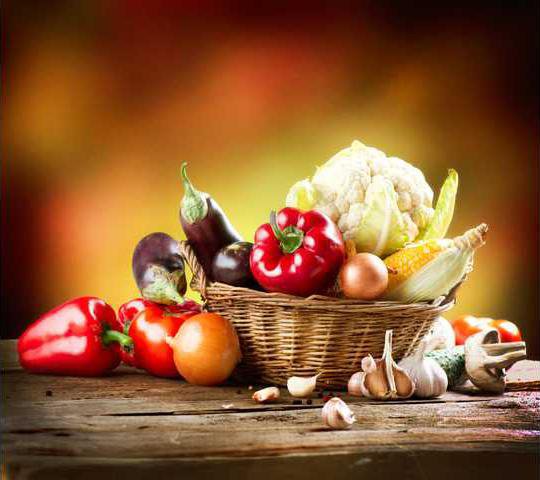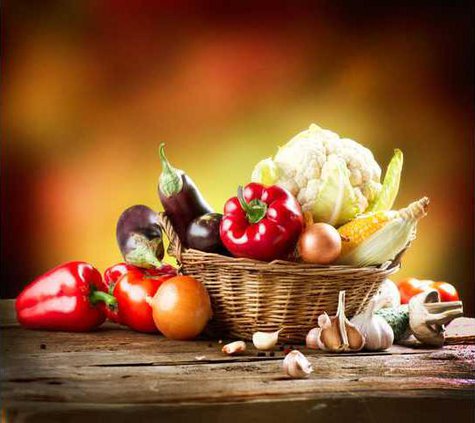In a society rampant with you shouldnt eat that messaging, figuring out what to eat can be a trip down negativity lane.
Here are six foods most Americans could do well to eat more:
Berries
Berries may be small members of the fruit group, but they pack a big punch. Not only are they literally bursting with flavor, they are also packed with vitamins, minerals and antioxidants. Antioxidants prevent oxidative damage to our body cells; a process which leads to inflammation and disease. They can be expensive so try growing your own and comparing prices in all forms (fresh vs. frozen) throughout the year.
Try a berry smoothie, a berry loaded breakfast bowl, fruit salsa, or a berry salad.
Dark Green Vegetables
This is another food group high in antioxidants and important minerals like calcium, B-vitamins like folate, and vitamins like vitamin C and a precursor to vitamin A (beta-carotene). Low in calories and high in nutrition, dark green vegetables are quintessential nutrient-dense foods that could benefit every eater.
Try a green smoothie, broccoli and chicken sausage pasta, or spinach lasagna rolls.
Dark Orange Vegetables
Did you ever mow down a bag of carrots as a kid to improve eyesight? This food group does more than just protect and optimize sight (and it probably wont do it in one sitting much to my younger selfs dismay). Carrots, orange squashes, sweet potatoes, and peppers are good sources of bioactive phytochemicals including antioxidants and others that protect against chronic disease. They are good sources of vitamins, minerals, fiber, and carbohydrate energy.
Try twice-baked butternut squash, roasted carrots, butternut squash macaroni and cheese, honey cinnamon roasted sweet potatoes, or pumpkin pancakes (I always add in a small handful of cinnamon chips for good measure).
Whole Grains
Whole grains are the kernels of grasses. They contain the nutrients a new grass needs to grow and thrive should the kernel fall to the ground and take root in the earth. They are rich in essential fats, minerals, and fiber. Many of these important nutrients are lost in the processing of refining grains. Though some are added back in during enrichment, the refined grain is still missing important nutrients.
Try this black rice salad with mango and peanuts, overnight oats, a quinoa black bean salad, or if youre feeling adventurous, a Korean barley bowl.
Nuts and Seeds
Dont let this energy-dense (i.e. high calorie) group scare you off. The essential healthy fats and protein in nuts and seeds help us feel satisfied and stay fuller longer. Consuming at least an ounce per day can benefit you in significantly. The fats present in this group especially walnuts, flax, and chia seeds are anti-inflammatory and beneficial for the health of skin, hair, fetal development, and memory.
Try mango coconut chia seed pudding, ginger roasted almonds, or a homemade trail mix or energy bites.
Legumes
This group includes lentils, beans, and peas. These foods form the protein foundation for cuisines around the world. Legumes are also rich in fiber which is protective against heart disease, important for bowel health, and helps you feel fuller longer. They are a good source of the minerals iron and zinc. Next time youre at the grocery store, pick up a new legume or an old favorite; canned or dried.
Try this black bean edamame salad or plain ol microwave steamed edamame, a bean-based quesadilla or salad, this perfected white bean chicken chili, or red lentil and coconut soup.
Here are six foods most Americans could do well to eat more:
Berries
Berries may be small members of the fruit group, but they pack a big punch. Not only are they literally bursting with flavor, they are also packed with vitamins, minerals and antioxidants. Antioxidants prevent oxidative damage to our body cells; a process which leads to inflammation and disease. They can be expensive so try growing your own and comparing prices in all forms (fresh vs. frozen) throughout the year.
Try a berry smoothie, a berry loaded breakfast bowl, fruit salsa, or a berry salad.
Dark Green Vegetables
This is another food group high in antioxidants and important minerals like calcium, B-vitamins like folate, and vitamins like vitamin C and a precursor to vitamin A (beta-carotene). Low in calories and high in nutrition, dark green vegetables are quintessential nutrient-dense foods that could benefit every eater.
Try a green smoothie, broccoli and chicken sausage pasta, or spinach lasagna rolls.
Dark Orange Vegetables
Did you ever mow down a bag of carrots as a kid to improve eyesight? This food group does more than just protect and optimize sight (and it probably wont do it in one sitting much to my younger selfs dismay). Carrots, orange squashes, sweet potatoes, and peppers are good sources of bioactive phytochemicals including antioxidants and others that protect against chronic disease. They are good sources of vitamins, minerals, fiber, and carbohydrate energy.
Try twice-baked butternut squash, roasted carrots, butternut squash macaroni and cheese, honey cinnamon roasted sweet potatoes, or pumpkin pancakes (I always add in a small handful of cinnamon chips for good measure).
Whole Grains
Whole grains are the kernels of grasses. They contain the nutrients a new grass needs to grow and thrive should the kernel fall to the ground and take root in the earth. They are rich in essential fats, minerals, and fiber. Many of these important nutrients are lost in the processing of refining grains. Though some are added back in during enrichment, the refined grain is still missing important nutrients.
Try this black rice salad with mango and peanuts, overnight oats, a quinoa black bean salad, or if youre feeling adventurous, a Korean barley bowl.
Nuts and Seeds
Dont let this energy-dense (i.e. high calorie) group scare you off. The essential healthy fats and protein in nuts and seeds help us feel satisfied and stay fuller longer. Consuming at least an ounce per day can benefit you in significantly. The fats present in this group especially walnuts, flax, and chia seeds are anti-inflammatory and beneficial for the health of skin, hair, fetal development, and memory.
Try mango coconut chia seed pudding, ginger roasted almonds, or a homemade trail mix or energy bites.
Legumes
This group includes lentils, beans, and peas. These foods form the protein foundation for cuisines around the world. Legumes are also rich in fiber which is protective against heart disease, important for bowel health, and helps you feel fuller longer. They are a good source of the minerals iron and zinc. Next time youre at the grocery store, pick up a new legume or an old favorite; canned or dried.
Try this black bean edamame salad or plain ol microwave steamed edamame, a bean-based quesadilla or salad, this perfected white bean chicken chili, or red lentil and coconut soup.








